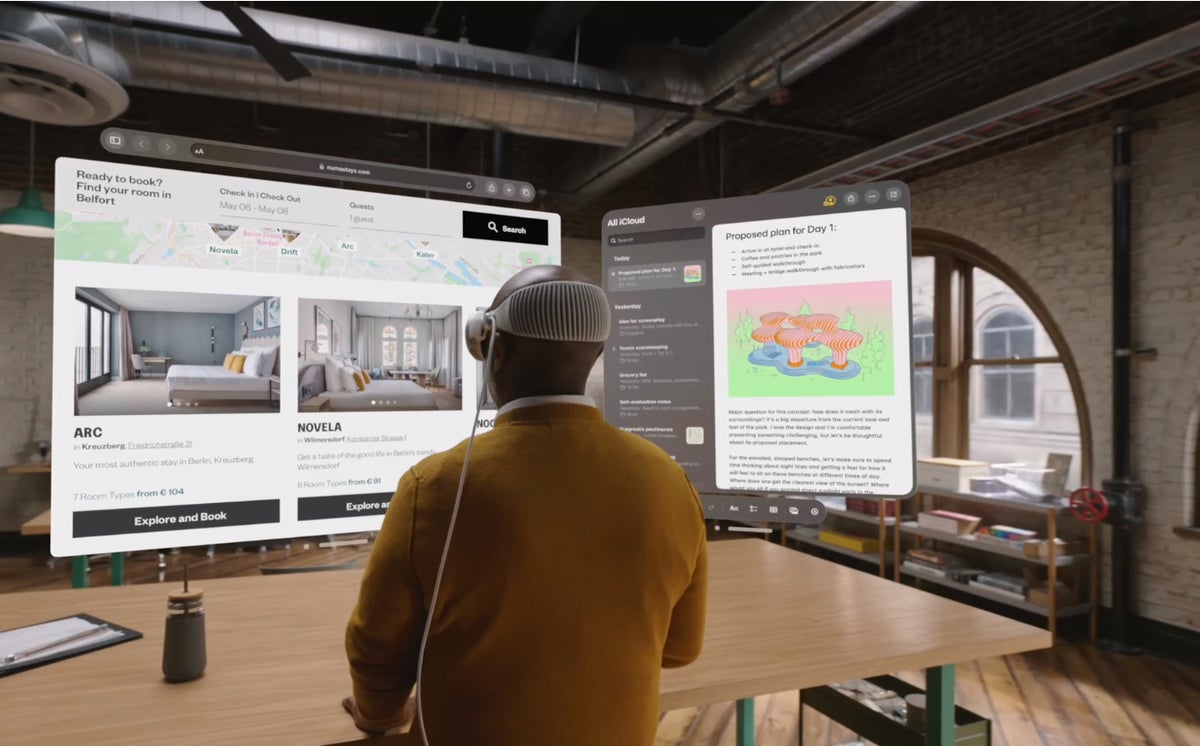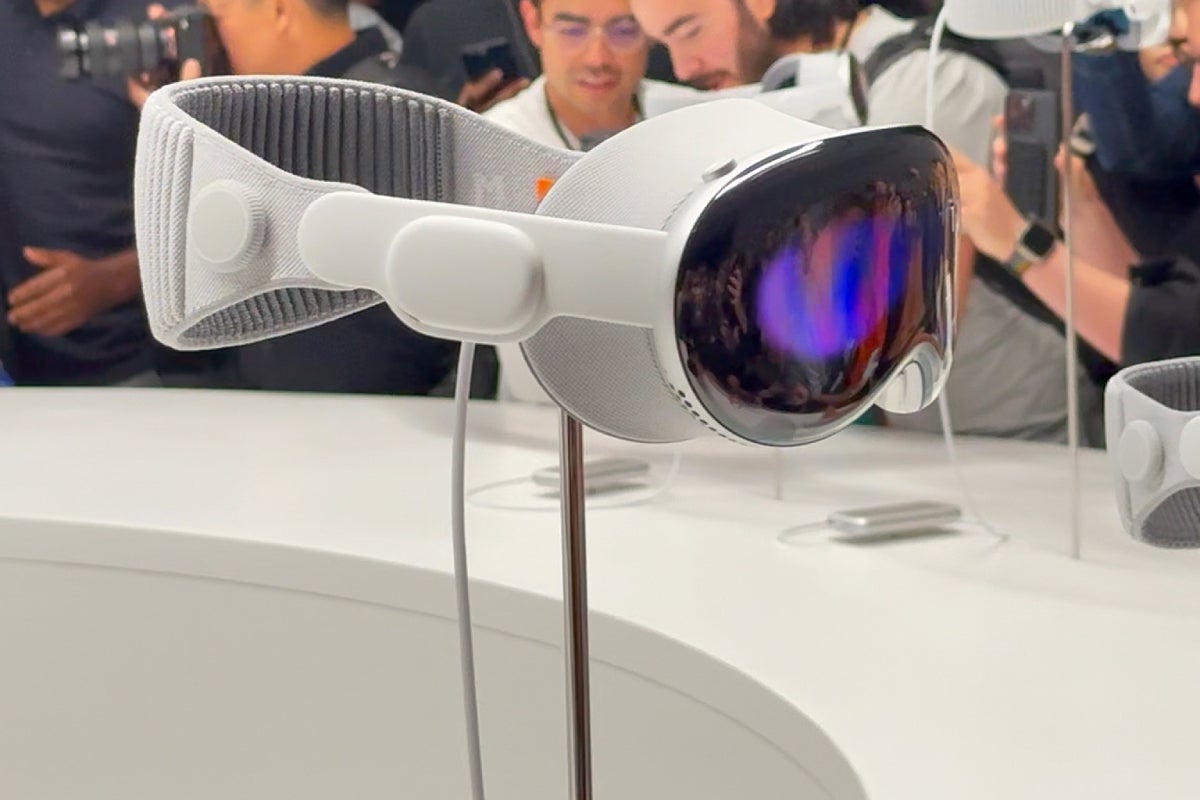Apple hasn’t been shy about its view of the Vision Pro as an enterprise device with real-world business applications. (The company even highlighted business apps during the mixed-reality headset’s introduction at this year’s Worldwide Developer Conference.)
While there’s plenty to say about how the Vision Pro can (or can’t) fit into workers’ daily activities, it’s important that IT departments get prepared to support this new technology before Apple rolls it out in 2024.
Focus on the who, not the when
To be fair, companies still have time. Apple hasn’t shipped the Vision Pro, has been very cool on giving developers access to it — and to workshops on developing apps for it — and will likely face serious supply constraints when it does ship. Oh, and the $3,500 cost will shrink the market quite a bit.
The challenge: that sliver of the buying public with enough disposable income to purchase a first-generation Vision Pro is almost certain to include executives and other high-level employees — exactly the type of people who expect white-glove treatment when it comes to technology (or anything else). This is the same demographic that brought the first iPads into the office 13 years ago and always seems to have the latest iPhone or other tech device. And they’ll expect their IT operations to offer support for the Vision Pro quickly, if not on day one.
Does Vision Pro have a place in business? Does it matter?
At least initially, the Vision Pro may not have an obvious use in any workplace. It might well look like an executive’s new tech toy. But that’s exactly the same kind of argument that was made about the iPad, a view that fell apart when doctors, lawyers, and executives instantly saw how they could use it in their professional lives and took it to work.
Vision Pro is a whole different product and product category. Some use cases are easy to imagine — medical or engineering telepresence and augmented reality come to mind — while many others might not be obvious until someone actually gets their hands on the device and starts experimenting.
That’s just one of the challenges enterprises face, and it may well be the easiest to handle. With so many unknowns, it’s pretty much impossible right now for any IT department to have answers, but IT pros and executives should at least be working to get their arms around the possibilities for Vision Pro before it ships.

Apple pitched its Vision Pro, at least initially, as a business-oriented solution.
As in other areas, IT needs to partner with business users and executives about Vision Pro. Doing so gives IT decision-makers visibility into what’s expected of them, allows them to adapt to changing situations, and gets them better prepared for the day a corporate executive walks in the door with a Vision Pro. By opening doors and starting discussions now, IT becomes a partner in a successful Vision Pro trial, not an obstacle to be overcome.
These kinds of efforts build the social capital every IT department needs to get things done, with minimal obstructions and with planned buy-in for any initiative. The arrival of the Vision Pro clearly offers a chance to build social capital in some organizations.
Look for early adopters
So how does IT begin discussions about a product almost no one has had a chance to use? Start by bringing it up in conversation. If you’ve been at a company for even a minute, you’ll already know the curious, gadget-happy tech junkies among the leaders of the company. They’re the ones already asking questions about a new gizmo, the ones who want to geek out with the IT staff, the earliest of early adopters. Most likely, they’ve already started the conversation for you or are amped up to do so — they’re just waiting for the opportunity.
So, give it to them. Admit that you’re just as curious about these headsets and platforms (or AR/VR in general) as they are. And keep the conversation going. You don’t have to chat about the Vision Pro every day, but reference it here or there, especially when it pops up in a general or tech news story.
Management isn’t likely part of the discussion…yet
One of the things that makes almost all Apple devices a great fit for business and education is that the company has built a very robust ecosystem of device management tools. Under its mobile device management (MDM) architecture, IT departments can secure, configure, and deploy iOS, iPadOS, macOS, and tvOS.
Although Apple may be positioning Vision Pro as an enterprise device, there’s no guarantee it will support MDM out of the box — and Apple’s track record makes it unlikely the headset will have fully-baked-in MDM features. Apple only just added watchOS to the stable of products that can be managed this way and even there the use cases and management options apply to a narrow subset of business users.
Vision Pro’s feature set is much greater than the Apple Watch, and it can integrate with macOS to essentially replace a user’s display. This implies Apple could make MDM more of a priority than it has with the watch, though the safe assumption is that you won’t be able to comprehensively manage and deploy Vision Pro devices when they ship. Even if some management capabilities are available at launch, they’ll probably be limited.
What can you manage?
There are some ways to manage visionOS without directly managing a Vision Pro device, however.
The first of these involves managed Apple IDs. I looked at the growing power of managed Apple IDs earlier this year. They work much like personal Apple IDs but include account and per-service management. Let’s say IT wants to allow a user to sync their work data using a work iCloud account — you can do that. Want to let workers sync enterprise passwords and passkeys, but nothing else? You can do that, too. You can even block any and all Apple services, if required.
Since Apple IDs are a major part of Apple’s ecosystem, regardless of whether they’re business or personal, Vision Pro will almost certainly use them. Should Apple include managed Apple ID support in visionOS (no guarantee), this would offer a bit of de facto management of the user account — even if there is no direct MDM option.
Another tactic is to use your corporate network to limit or manage what visionOS can access. This should be no different than managing any other network traffic. IT could set filters or restrictions based on device, user account, type of traffic, and destination. (Alternatively, IT could prioritize traffic to deliver a better visionOS user experience — or do a combination of both.)
And remember, if Vision Pro is being used in conjunction with other Apple devices — a particular Mac, for instance — managing that Mac remains possible and might be the best avenue to consider. It really isn’t much different than applying de facto controls over an Apple Watch by managing the iPhone it is paired with.
What needs to be managed?
The bigger initial question is about what needs to be managed, and this isn’t an easy one. Because it represents an entirely new way of interacting with a digital world, use cases and concerns around the Vision Pro aren’t going to be clear at first. While certain things are predictable in terms of managing access to enterprise information and recording capabilities, very few people have experienced Vision Pro. So, understanding what the device can do — as well as what it should do — remains a blank slate in ways most new technology isn’t.
Without firsthand experience with the platform, deciding what is a risk and what’s needed for successful integration in an enterprise environment involves more than a little guesswork.
This is clearly a chicken-and-egg situation. It may well be that the best that can be achieved at this point relies on good will and collective imagination, an ongoing conversation about where visionOS fits into your organization, and a clear understanding that — one way or the other, ready or not — many IT departments will soon have to contend with the Vision Pro.






